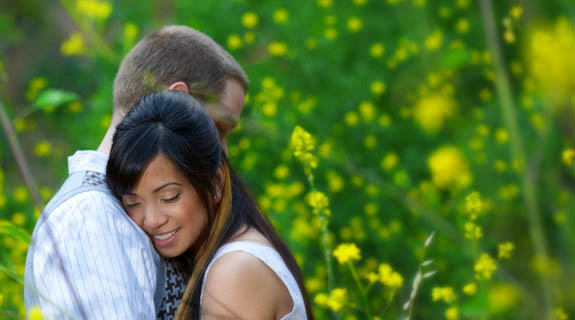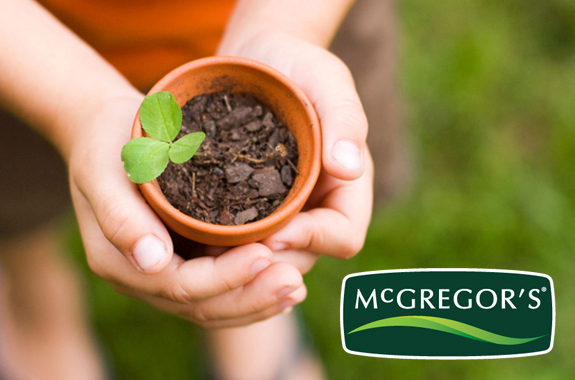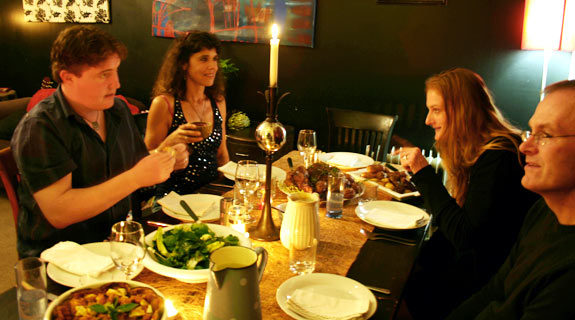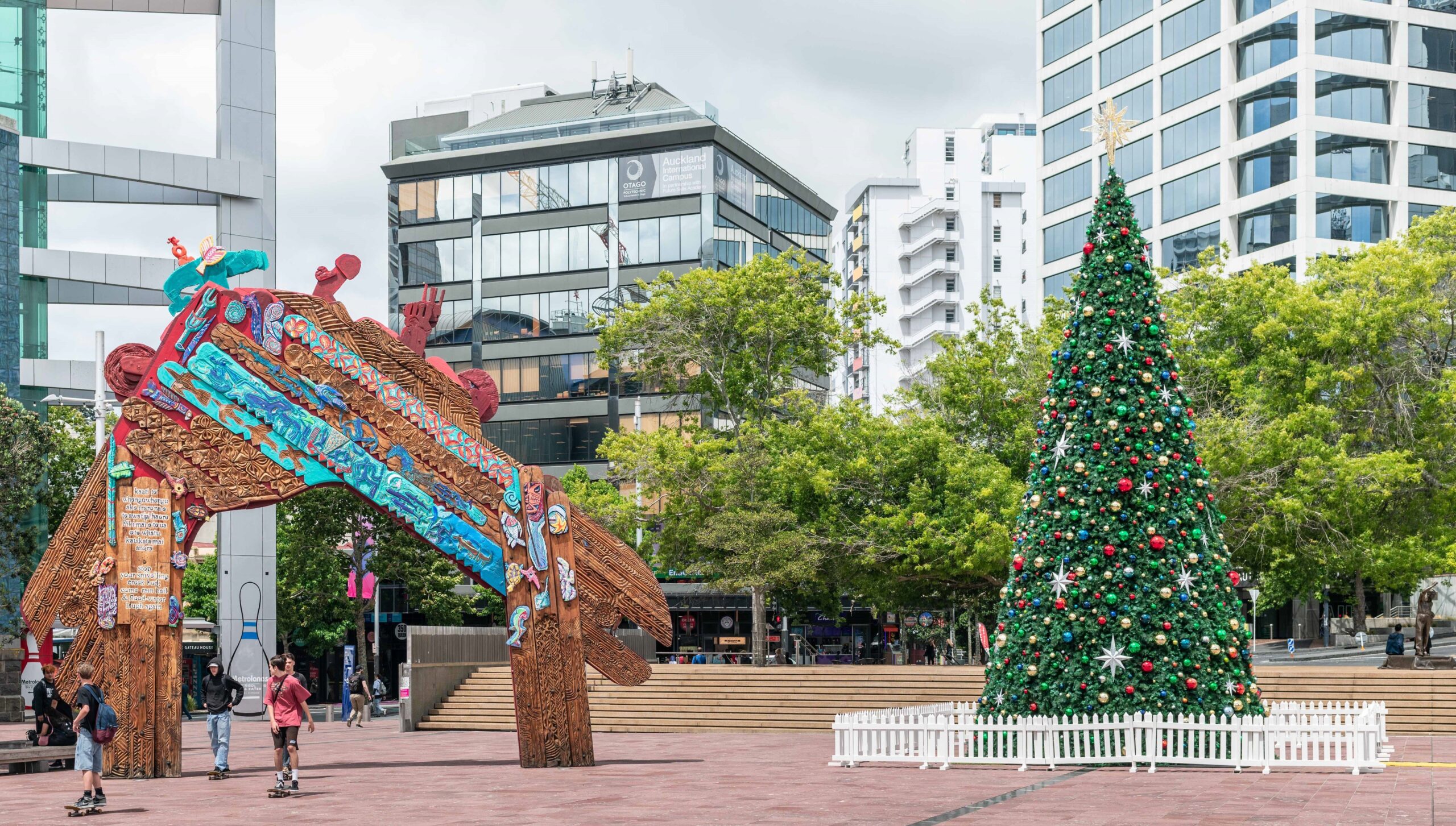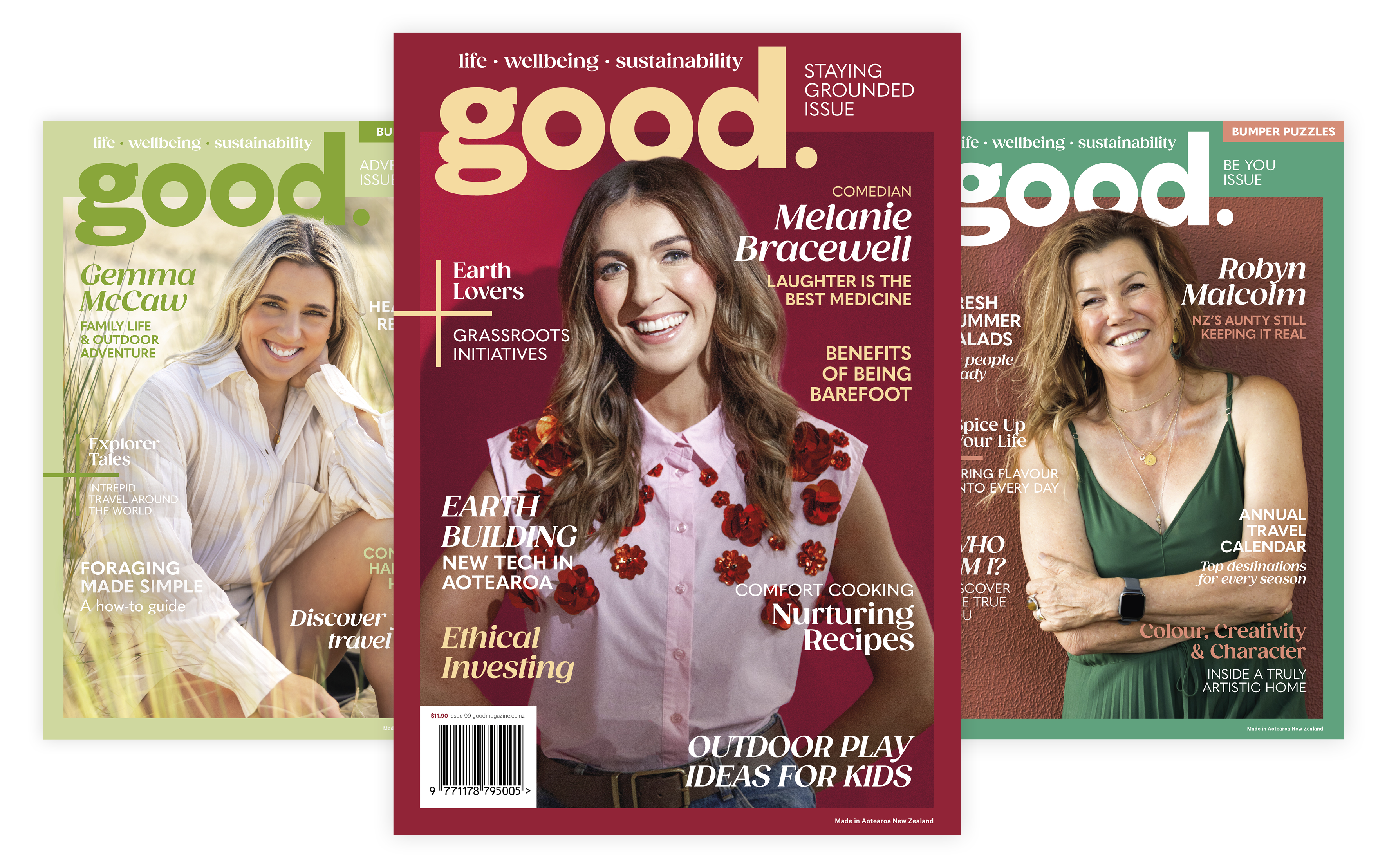A growing numbers of weddings today aren’t white—they’re green. But how to host a sustainable wedding? Good meets two newlywed couples and discovers how they dragged one of the oldest traditions into the 21st century
For an increasing number of couples, weddings aren’t white—they’re green. But making the right choices, then bringing their families along for the ride, adds an extra layer of complexity to an already stressful event. Good meets two newly-wed couples, and discovers how they dragged one of the oldest traditions into the 21st century
‘Engaged (#50497)’ photo by Mark Sebastian via Flickr
I knew from the beginning that I wanted to have a green wedding,” says Rena Kohere. She and her partner, Stefan Pishief, entertained thoughts of a quick service in the registry office, followed by a restaurant dinner with their nearest and dearest, but quickly realised that with huge families on each side, a small wedding simply wasn’t an option.
But neither was a traditional wedding with all the trimmings. “When you say you’re getting married,” says Rena, “everyone has an idea of what the wedding should be, no matter how you do it. But it was about us and our relationship, and we had to do it in a way that was right for us.”
For Rena and Stefan, that meant thinking carefully about where they spent their money. After a couple of trips down the aisle in a bridesmaid’s dress, Rena was dismayed by the cost of traditional weddings and the number of disposable items involved. For her own wedding, she refused to purchase anything that would be used only once, and bought from local suppliers wherever possible. “Your wedding is the most money you spend at any one time, and I wanted to spend it well. I wanted my money to go to local businesses and craftspeople, fair trade and organic products.”
The wedding industry is big business: more than 22,000 New Zealand residents registered marriages or civil unions last year, spending an average of $32,500 per wedding, according to New Zealand Weddings. For many thrifty couples, cutting down on waste and expenditure is simply being practical. For others, it’s also an expression of who they are and how they want to live.
“I generally live my life in a ‘green’ way,” says Amber Rhodes, another eco-bride. “So it went with my lifestyle to plan my wedding in the same way I live. I don’t like to waste things and I would prefer to use something that’s second-hand than new. That also gives things more interesting stories, and you’re more connected to them.”
For many environmentally and socially conscious couples, a wedding celebration that reflects their values is non-negotiable—but getting their families to see things their way is another matter. “One auntie really wanted to RSVP with a card!” says Rena. “She wanted to know why we weren’t doing things by the book.”
She and Stefan explained their less conventional decisions to guests on a one-to-one basis. “We said there might be a few things that were a bit different at our wedding, and that we’d really appreciate it if they thought along the same lines in terms of their gifts and their transport. It was really good to be able to have those conversations.” On the night, the couple also gave a list of their greener choices to the MC, so he could tell everyone about the differences they’d made. (A cousin now plans to use some of the couple’s ideas at her own wedding.)
For wedding guests who knew you best as a child, and those who don’t know your spouse at all, the opportunity to learn about what’s important to you now, and how you hope to live your lives together can make the day even more memorable. In that, and most other ways, a green union is no different from any other wedding: the celebration of a couple’s decision to share their lives—however they plan to live them.
Think ‘intimate’
It’s all in the numbers: the more people you invite, the higher the cost and the bigger the impact. Every person added to the guest list means more food consumed, more booze drunk, and more kilometres travelled. You probably won’t have complete control over the invite list, but don’t be afraid to draw the line at people you haven’t seen since you were three.
Savings: $75–$100 for each person left off the invite list
Go local
If you live in the South Island, but most of your family is up north, consider holding the reception where the fewest people will have to fly—even if that means travelling to your own wedding. If one of you hails from overseas, you could hold a reception in each country, so only the two of you need to travel internationally. Make one ‘wedding’ a small dinner party, to cut the expense and effort, and build your honeymoon into your trip.
Savings: None for you, but your guests will appreciate it—and it’s a great excuse for a honeymoon abroad!
Holding the ceremony and reception at the same venue will also save on transport. Hire a shuttle or bus if the venue is out of town, or help your guests arrange carpools.
Savings: $400–$1,000
Buy your blooms locally—try your nearest farmers’ market—and you’ll save money on delivery. Or you could go for the free option: collect posies from green-fingered rellies; find local wildflowers; let some herbs flower in your own garden; use native foliage, such as flax, for greenery; or ask friends to grow flowers and bring them along on the day for ad-hoc arrangements.
Savings: $400–$1,250
The biggest chunk of your wedding budget will go on food and drink, so make sure it goes somewhere worthy. Visit a local winery and microbrewery (realbeer.co.nz/nz_breweries) and you might be able to negotiate a bulk-buy discount. A growing number of caterers specialise in local, seasonal food, and many will accommodate a request for organic meat, so shop around.
Savings: None, unless you negotiate directly with primary producers
Good gifts
If you’ve already set up house together, you could ask for experience-based gifts instead of more kitchen doo-hickeys. Gift vouchers for a favourite restaurant, couple massages at a fancy spa, books of movie tickets, a tandem skydive or hot air balloon ride will make your first year of wedded bliss all the more blissful.
Savings: $1,056 for 12 movie and dinner dates
Wedding ‘favours’ for guests are a US trend that’s caught on here. But few guests expect or even want parting gifts, so why waste money on trinkets that will likely be left on the table at the end of the evening? Trust us, happy memories and a stonking hangover are enough of a takeaway.
Savings: $245

Amber and Paul Rhodes
Amber and Paul have been together for five years, and were married on February 9, 2008. Amber works as a costumer for the film industry and Paul is a musician and film unit assistant.
Guests: 120 people. Most of the bride and groom’s family and friends are based in Auckland and could carpool to the venue.
Venue: The Coatesville Settlers Hall, 25 minutes’ drive from Auckland city on the North Shore. “We chose it because it was $400 for an entire hall, park and kitchen. And because it was beautiful and pastoral, and perfect for our theme, which was A Victorian Afternoon.”
Food: Paul is vegetarian, so the buffet-style menu featured many vegetarian options, including Grilled Polenta with Salsa Verde and Green Beans, and Pea and Cherry Tomato Salad with Feta and Mint Vinaigrette. As they knew the caterers, the couple were able to bulk-buy some ingredients themselves. Amber collected empty wine bottles to use as water bottles for the tables, and a friend baked them a Chocolate and Cream Cheesecake, decorated with roses.
“We chose the Settlers Hall because it was $400 for an entire hall, park and kitchen. And because it was beautiful and pastoral, and perfect for our theme, which was A Victorian Afternoon.”
Invites: Paul’s mother, a calligrapher, handwrote the invite and menu, which Amber then adorned with Victorian floral cut-outs and copied onto coloured paper.
Gifts: In lieu of gifts, Amber and Paul requested that guests donate to an educational fund for their daughter, Winter, which everyone did.
Wedding party: Amber’s two sisters served as bridesmaids and Winter as flower girl, while Paul had three groomsmen and a friend’s son in his party. Both bridesmaids wore vintage dresses, and Winter wore an embroidered smocked cotton dress her grandparents had bought as a gift two years earlier. “We timed the wedding around Winter growing into the dress … and it did fit her perfectly on the day,” says Amber.
Flowers: The day before the wedding, Amber got up early to go to the Mt Wellington flower market, then made her own bouquets. Roses came from a local grower in Kumeu, and the greenery for decorating the hall came from her stepmother’s garden. Amber’s grandmother’s rose garden also contributed: “For the whole year before the wedding, she collected and dried rose petals so that we could use them as confetti instead of paper or rice.”
Rings: The couple’s wedding bands and Amber’s engagement ring were antiques, from Abby Antiques in Newmarket.
Dress: Amber wore a cream silk skirt with a train made from a piece of Nottingham lace that belonged to Paul’s grandmother. Her gloves and bustier were loaned to her by the costume designer for the film she was working on at the time. Amber made her own garter and the fans she and her sisters carried, which featured the same lace as her train.
Compromises: Although Amber used specially collected vintage damask tablecloths at the reception, she had to forsake a dream of also using vintage teacups and saucers, which she’d intended to give to guests as a keepsake. “It just became unmanageable.”

Rena Kohere and Stefan Pishief
Rena and Stefan have been together nine years, and were married in Wellington on March 15, 2008. Rena manages the Starfish clothing store in Wellington, and Stefan works for the Department of Internal Affairs.
Guests: 120 people—a small wedding for the large families involved, whose past weddings have numbered up to 450 guests.
Venue: Soi Café & Bar, on the Wellington waterfront. To cut down on transport throughout the day, the ceremony took place in the conservatory, photographs were taken just outside, and the reception was held in the restaurant. Most out-of- town guests stayed at a hotel within walking distance.
Food: Soi is known for its commitment to organic and local food, but its composting system and approach to waste minimisation also helped win the couple’s approval. “I wasn’t going to have those little packets of sugar on the table, after all the effort elsewhere!” says Rena.
Rena made Stefan’s ring herself, after taking a six-week jewellery-making course with Dorthe Kristensen at Vilders Gallery. She also made his cufflinks and her own earrings
Invites: The invitation was a simple postcard, printed on recycled paper, directing guests to a website containing all the wedding information. The couple also used Facebook to communicate with guests prior to the wedding.
Gifts: Rena and Stefan expressed a preference for charitable donations as well as presents; gifts included a WWF membership, and goats and condoms from the Oxfam website.
Wedding party: The couple’s two-year-old daughter, Henarata, was flower girl. “She thought it was a party for her, basically,” says Rena. The couple chose not to have a full bridal party, to save on waste, effort and stress.
Transport: Many out-of-town guests carpooled to the wedding in family groups, or combined the trip with other reasons to visit Wellington. “I wasn’t allowed to catch a bus to the wedding,” says Rena, so the bride and groom arrived in separate Green Cabs.
Flowers: A local florist supplied succulents that are now thriving in the couple’s garden. The bride’s bouquet was a single orchid grown in Northland, where Stefan was born.
Rings: Rena made Stefan’s ring herself, after taking a six-week jewellery making course with Dorthe Kristensen at Vilders Gallery. She also made his cufflinks and her own earrings. Rena’s engagement ring was a plain band from local jeweller The Village Goldsmith; engraved with the wedding date and the couple’s initials, it now serves as a wedding band.
Dress: Rena spent a long time trying to source hemp silk for a custom-made wedding dress, but when that got far too tricky, she went to New Zealand label Zambesi and fell in love with the first dress she tried on. At 6’7”, Stefan was never going to find a suit to hire, so he had one custom-made by Mandatory in Wellington; he now wears it to work several times a week.
Compromises: An original plan for a keg of beer, to reduce waste, went by the wayside because it wouldn’t fit behind the venue’s bar. The keg itself was a compromise, when the mother of the bride baulked at the idea of swappa crates. Rena’s pleas to save paper were also drowned out at the last minute; Stefan spent the night before the wedding printing a seating arrangement—albeit on a single sheet of A4.
Ditch the disposables
Invitations have become weighty packages, complete with map, accommodation info, gift registry and RSVP cards— not to mention the invitation itself, which is fashionably made up of multiple layers of card, in its own envelope within the larger envelope. Madness! Pare it back to basics, provide extra information online, and print on recycled paper.
Check out Paperless Wedding for an all-online option that offers a fully customisable wedding website for just $99, including invitations, RSVP management, online charity donations, message board, gift list and photo album—phew!
Savings: $255+
At the wedding, a single sheet of paper is all you need to communicate where guests are seated for dinner, avoiding the need for place names.
Savings: $242
Heavy Metal
The price of gold has tripled in recent years, but that’s the least of its problems. Gold mining does hideous things to the environment and to mine workers’ health—and it’s completely unnecessary. There’s enough gold above ground to supply the jewellery industry for the next 50 years. Visit a jeweller specialising in recycled metal, or create your own heirloom ring: ask family and friends to donate unwanted gold jewellery, then take it to a goldsmith for recycling into a new wedding band.
Savings: $100–$500 per ring
Green gold down under
Ashley Hilton (ashhilton.com) uses new gold sustainably collected from West Coast beaches, an operation that also removes metals such as mercury from the environment. Ashley will also recycle old jewellery into a new piece.
Greg Holland Fine Jewellery (gregholland.co.nz) uses gold that has been mined responsibly in New Zealand, and recycled platinum sourced locally from jewellers and industry. Diamonds are sourced from suppliers that deem them to be conflict-free.
Vilders Gallery (vildersgallery.co.nz) offers courses in making your own wedding rings with Wellington goldsmith Dorthe Kristensen. The gallery also makes new rings from old gold, platinum and gemstones.
Ethical Jewellery Australia (ethicaljewels.com.au) uses 100 percent recycled gold and non-conflict diamonds and gemstones, cut by non-sweatshop labour.
Utopian Creations (utopiancreations.com.au) creates rings in a carbon-positive eco-studio made completely from salvaged materials. Rings are made from recycled precious metals, vintage diamonds and ‘old mine’ hand-cut diamonds.


